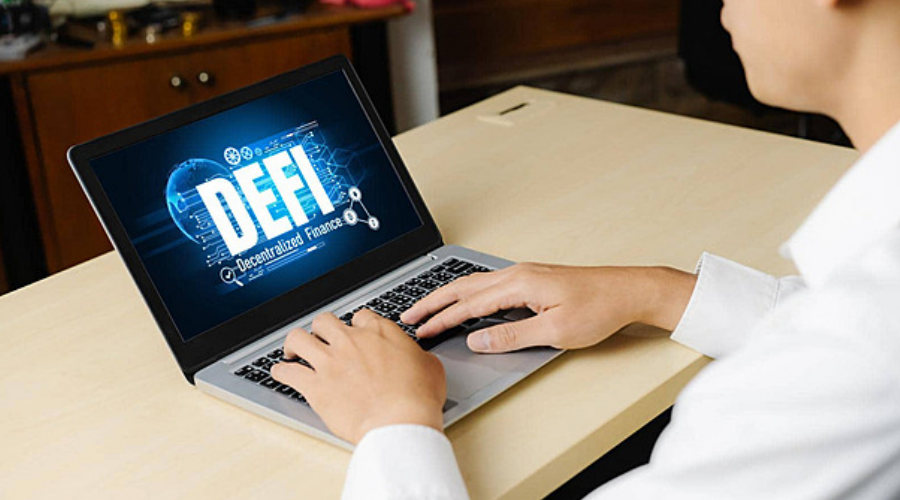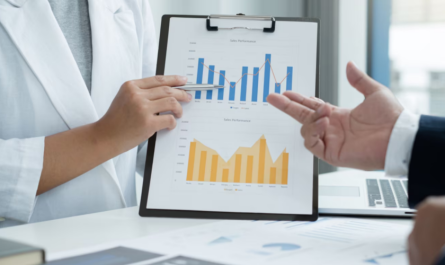AI-powered trading systems analyze vast amounts of data in real-time, identifying patterns and opportunities that human traders might miss. This leads to quicker, more efficient trade executions and improved risk management. The ability of AI to process data from various sources, such as financial news, market sentiment, and historical performance, allows traders to make informed decisions within seconds.
AI-driven trading has evolved significantly in recent years. In the past, investors relied on traditional technical and fundamental analysis to make trading decisions. Now, machine learning algorithms can predict market movements with remarkable accuracy by analyzing millions of data points. This transformation has made AI-powered trading more accessible to retail investors, enabling them to compete with institutional players.
2. Benefits of AI-Powered Trading
a. Enhanced Market Analysis
AI algorithms process financial data, news, and market trends to provide accurate predictions and insights. They use deep learning and natural language processing (NLP) to extract valuable information from earnings reports, central bank statements, and global economic news. This allows traders to react swiftly to market shifts and identify profitable trading opportunities.
b. Automated Trading Strategies
AI-driven bots execute trades at optimal times, reducing human error and maximizing profits. These bots follow pre-set trading strategies and adapt to changing market conditions in real-time. High-frequency trading (HFT), a form of AI-powered trading, executes thousands of trades per second, capitalizing on minute price discrepancies that human traders would never notice.
c. Risk Management & Fraud Detection
AI helps identify potential risks and fraudulent activities, protecting investors from market manipulations. AI models analyze historical data and recognize unusual trading patterns that may indicate insider trading or market manipulation. This proactive approach minimizes risks and enhances the overall security of financial markets.
d. Emotion-Free Trading
Unlike human traders, AI-based systems do not suffer from emotional biases. Fear, greed, and impulsive decision-making often lead to costly mistakes in trading. AI executes trades based solely on data and analytics, ensuring consistency and rational decision-making.
3. AI-Powered Trading Tools to Watch in 2025
- Trade Ideas – AI-powered trade signals and automated strategies that help traders make informed decisions.
- TuringTrader – Advanced algorithmic trading and portfolio management designed for retail investors.
- QuantConnect – Cloud-based AI trading for developers and institutions, allowing them to build and test strategies.
- Kavout – AI stock ranking and predictive analytics that assist in identifying high-potential investment opportunities.
- AlgoTrader – A robust AI trading platform offering automated trading for hedge funds and institutional investors.
4. How AI is Changing the Role of Human Traders
While AI-powered trading enhances efficiency and accuracy, it does not eliminate the need for human traders. Instead, traders are shifting their roles from executing trades manually to overseeing AI systems and refining strategies. Portfolio managers and financial analysts now focus more on designing AI-driven models and interpreting algorithmic outputs to optimize investment decisions.
Additionally, AI is leveling the playing field by providing sophisticated trading tools to retail investors. In the past, only hedge funds and large institutions had access to cutting-edge trading technology. Now, AI-powered platforms offer automated trading solutions to everyday investors, making the stock market more inclusive.
5. How Investors Can Leverage AI in 2025
- Use AI-driven investment platforms for data-driven trading strategies.
- Combine AI with human expertise for a balanced investment approach.
- Stay informed about AI advancements and how they impact market trends.
- Diversify portfolios using AI-driven insights to reduce risk and maximize returns.
- Backtest strategies using AI-powered simulations to evaluate their effectiveness before applying them in real markets.
6. Ethical Considerations and Challenges
Despite its benefits, AI-powered trading raises several ethical and regulatory concerns. The rapid execution of trades by AI-driven systems can lead to market volatility, as seen in past flash crashes. Regulators are working to implement policies that ensure AI trading remains fair and transparent.
Another concern is the potential for AI algorithms to reinforce existing biases in financial markets. If AI models are trained on biased data, they may unintentionally favor certain stocks or market sectors over others. Investors and developers must remain vigilant in ensuring AI-driven trading strategies are ethical and unbiased.
Final Thoughts
AI-powered trading is reshaping the stock market by enhancing efficiency, reducing risks, and maximizing returns. As AI continues to evolve, investors who adapt to this technology will have a significant edge in 2025 and beyond. However, traders must remain mindful of the ethical and regulatory challenges associated with AI-driven trading. By leveraging AI responsibly, investors can capitalize on emerging opportunities and stay ahead of market trends.







